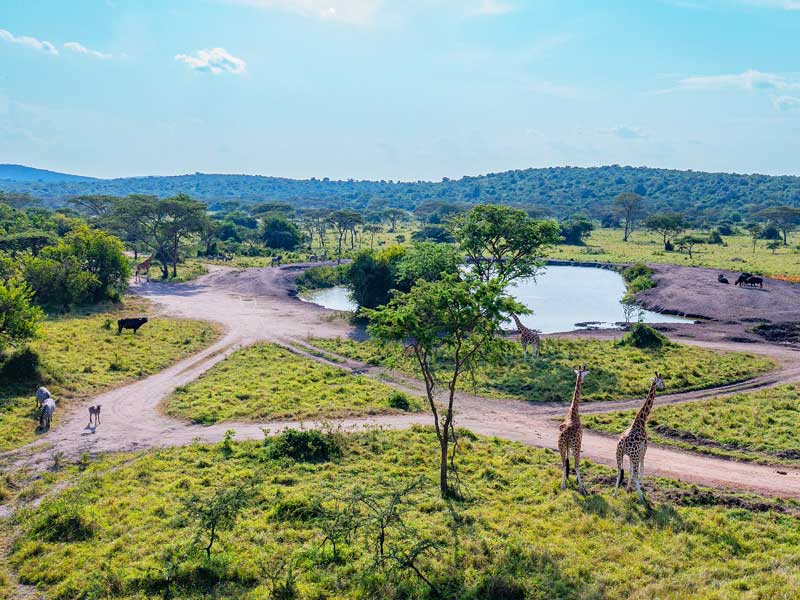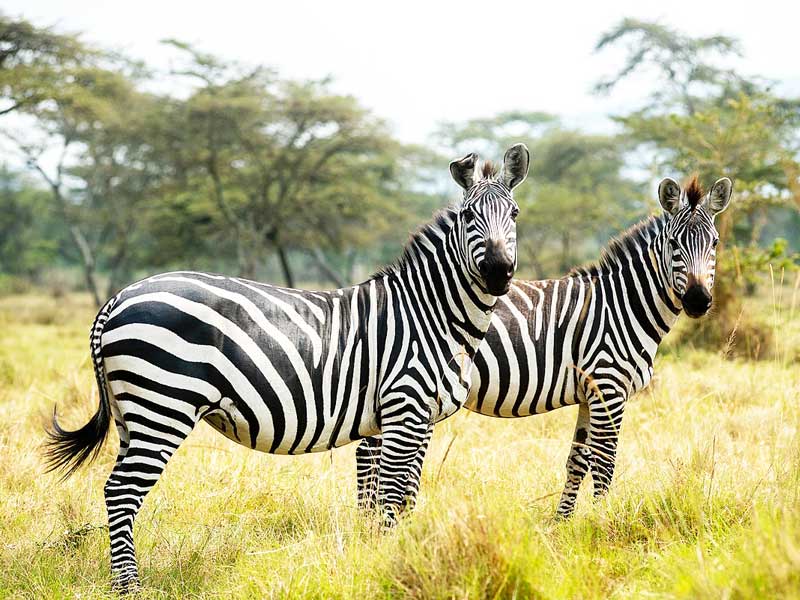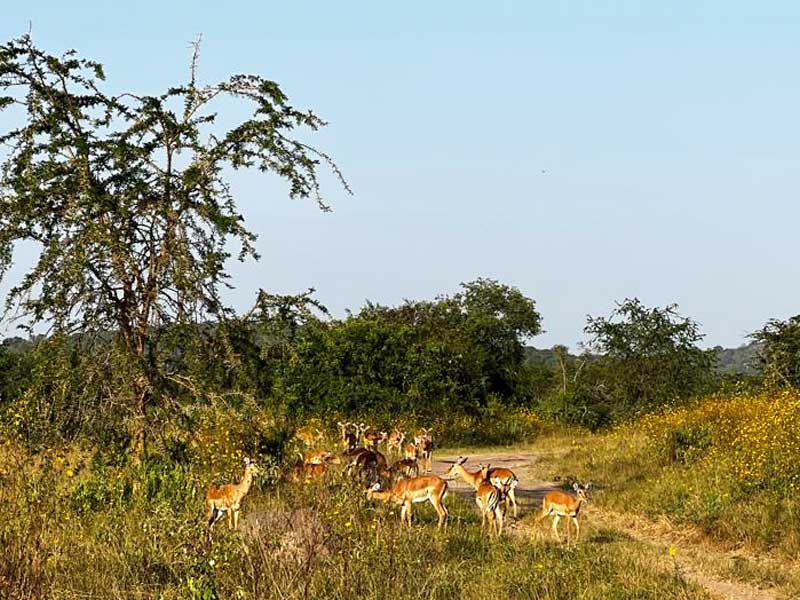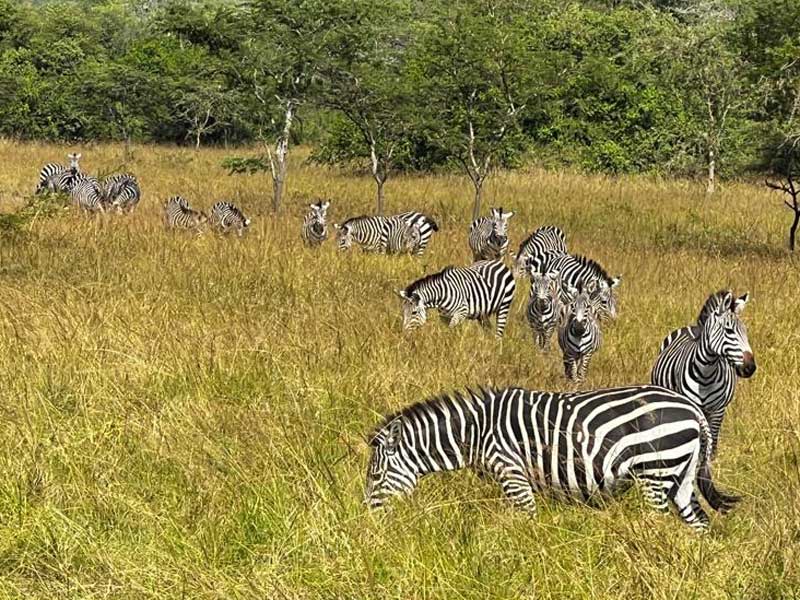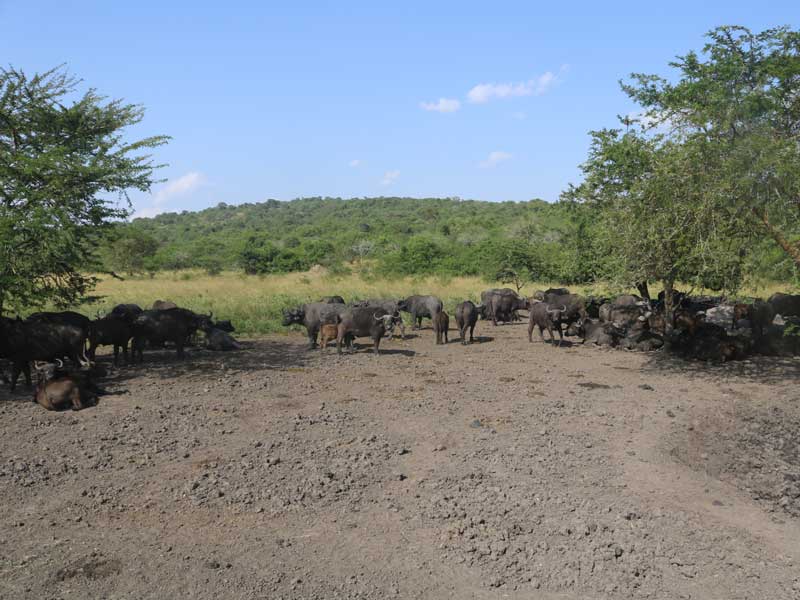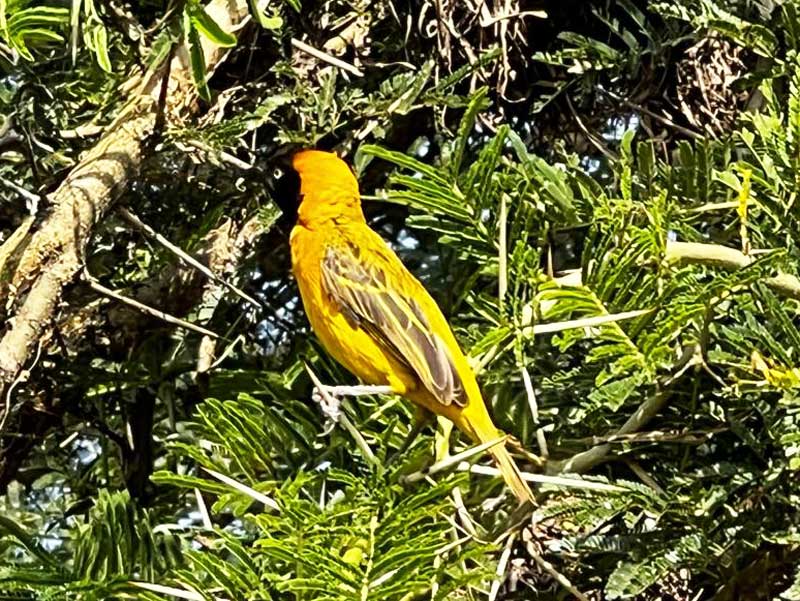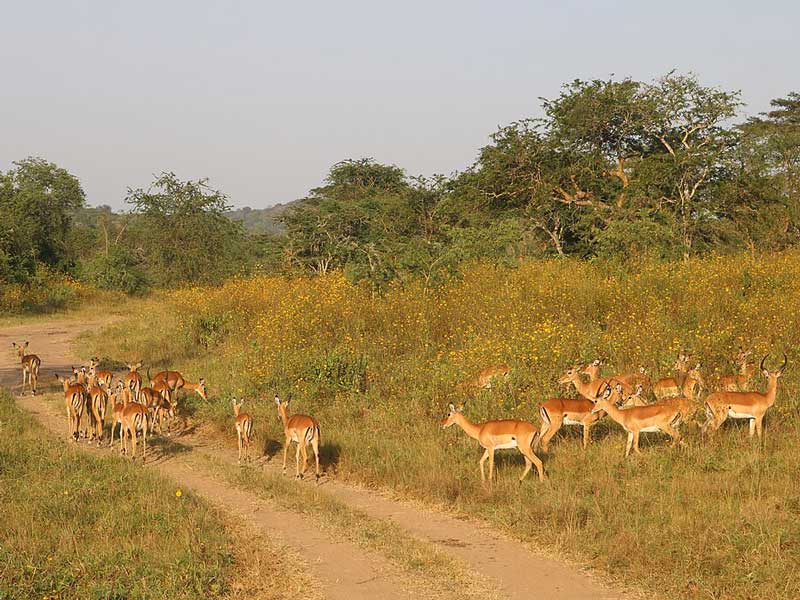Nestled in the heart of Uganda, Lake Mburo National Park is a treasure trove of natural wonders. Despite its modest size of 370 square kilometers, the park is a vibrant tapestry of diverse ecosystems, each teeming with unique flora and fauna. Established in 1983, it has grown into a sanctuary that offers a microcosm of Uganda’s natural beauty and biodiversity.
The Lakes and Wetlands
At the heart of the park lies Lake Mburo, one of the five lakes within the park’s boundaries. These interconnected lakes are remnants of an ancient system that once covered a much larger area. Lake Mburo is the centerpiece, a shimmering expanse of water that reflects the sky and surrounding landscapes, creating a picturesque setting. The lake and its associated wetlands are crucial habitats for various aquatic species and birds. The papyrus fringes are home to the elusive sitatunga antelope and a myriad of bird species, including the iconic African fish eagle and the rare shoebill stork.
The Rolling Savannas
The park’s savannas are characterized by rolling hills and open plains dotted with acacia trees and patches of woodland. This mosaic of habitats supports a rich diversity of wildlife. Zebras roam the plains in large herds, their black and white stripes creating a striking contrast against the golden grass. The park is also home to impalas, elands, and buffaloes, with occasional sightings of leopards and hyenas. The reintroduction of Rothschild giraffes has added another layer of interest for visitors, as these majestic creatures grace the landscape with their towering presence.
Forests and Woodlands
Interspersed within the savannas are pockets of forest and dense woodlands. These areas provide a stark contrast to the open grasslands and are vital for species that prefer more covered habitats. The Rubanga Forest, a small but significant part of the park, is a haven for birdwatchers. It hosts an array of bird species, including the Narina trogon and the double-toothed barbet. The forest’s thick canopy and lush undergrowth also offer shelter to various mammals and primates, adding to the park’s ecological diversity.
The Rocky Outcrops
Scattered throughout the park are rocky outcrops and kopjes, which offer unique microhabitats for specialized flora and fauna. These granite outcrops provide vantage points for predators like leopards and are often used as resting spots for birds of prey. The crevices and cracks in the rocks harbor a variety of reptiles and small mammals, creating an intricate web of life that thrives in these rugged landscapes.
The Wetlands and Swamps
Beyond the lakes, the park’s wetlands and swamps are crucial ecosystems that support a variety of life forms. These areas are particularly important for amphibians and reptiles, as well as for numerous bird species that rely on wetland habitats for breeding and feeding. The swamps are also home to the sitatunga, a semi-aquatic antelope adapted to life in dense, swampy vegetation.
Seasonal Variations
The park’s beauty is accentuated by its seasonal variations. During the wet season, the landscape transforms into a lush, green paradise, with flowering plants adding splashes of color. The dry season, on the other hand, offers a different kind of beauty, with the golden-brown savannas and the concentration of wildlife around the water sources creating stunning visual spectacles.
Conservation Efforts
Lake Mburo National Park’s natural wonders are not just a source of aesthetic pleasure but also a focal point for conservation efforts. The Uganda Wildlife Authority (UWA) has implemented various measures to protect the park’s biodiversity. Anti-poaching patrols, habitat restoration projects, and community education programs are integral to ensuring the park remains a thriving natural habitat.


